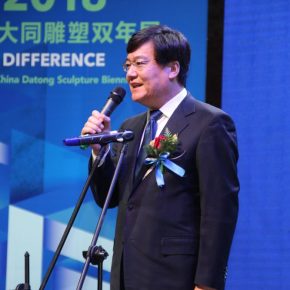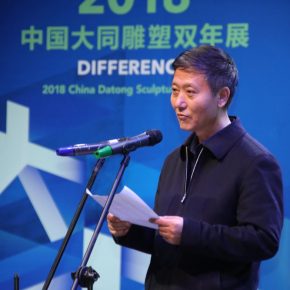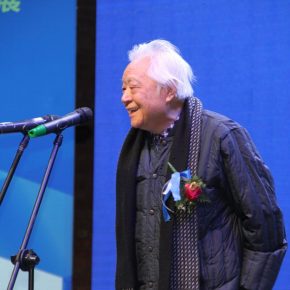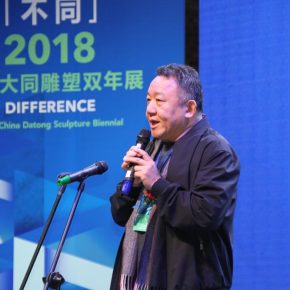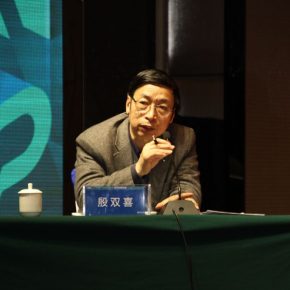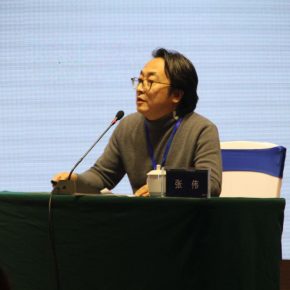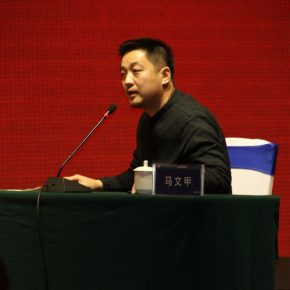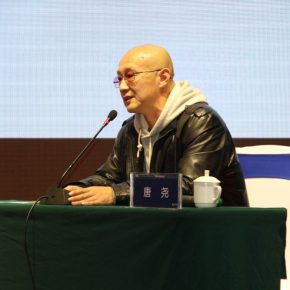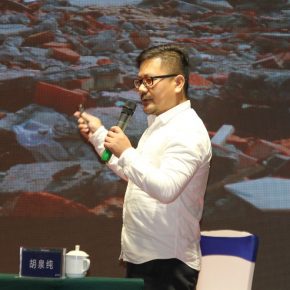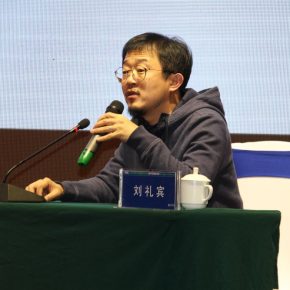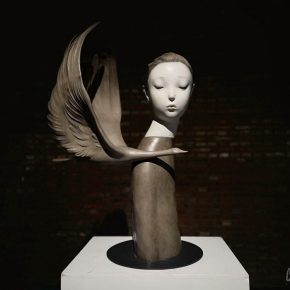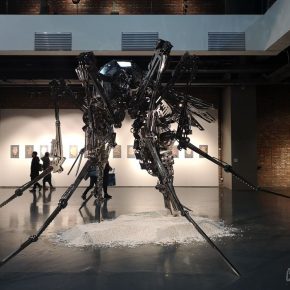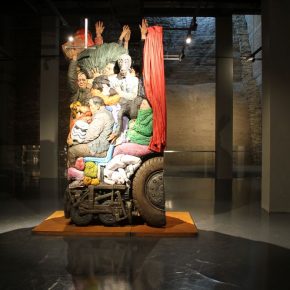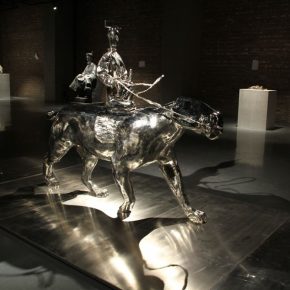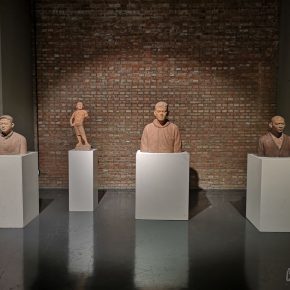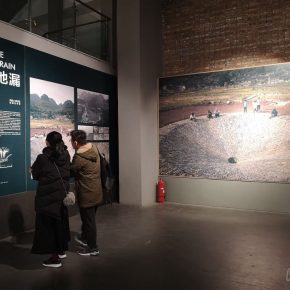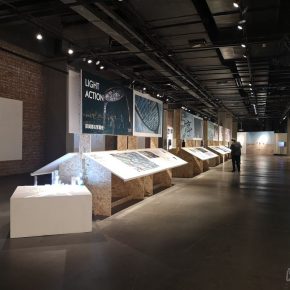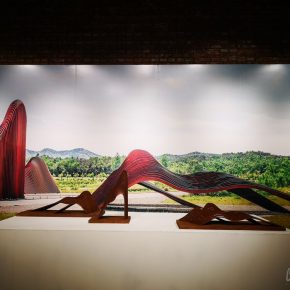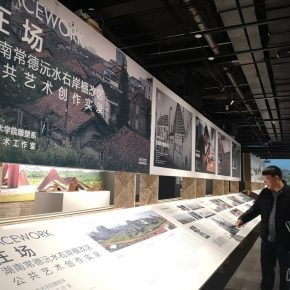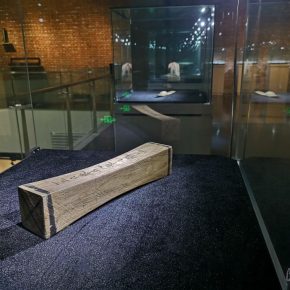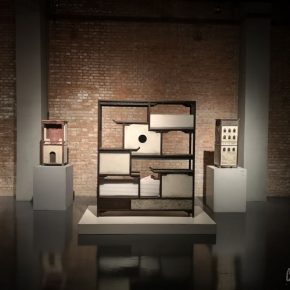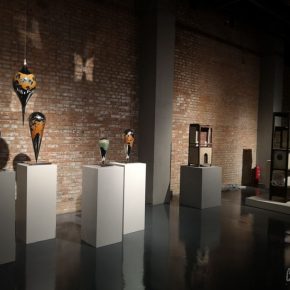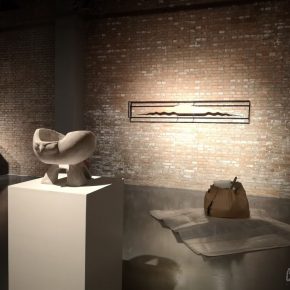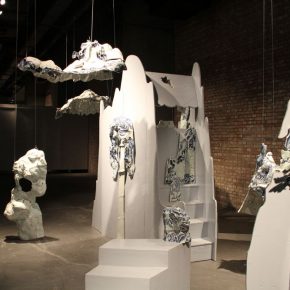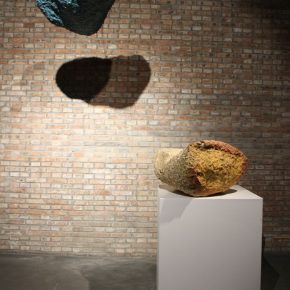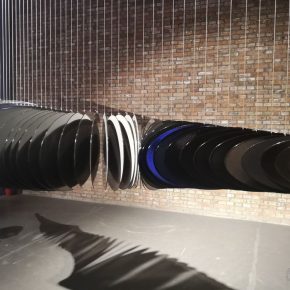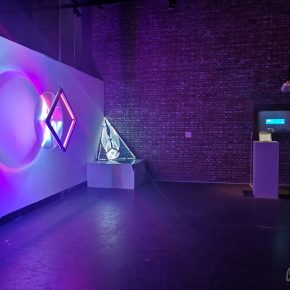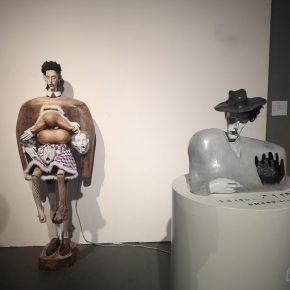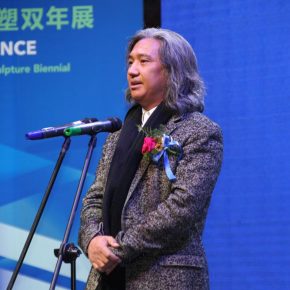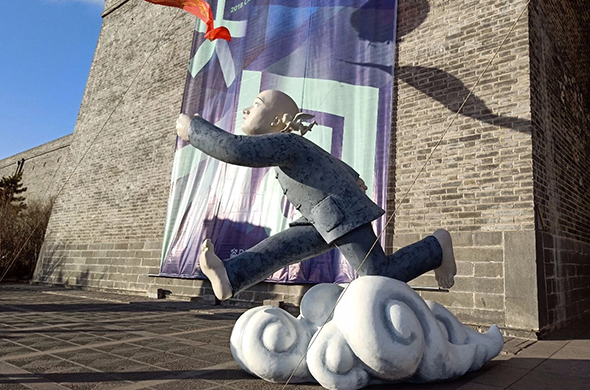
It is themed on “Difference”. There is an?old saying?that, “To make the world equally shared by all people, and to make the world universal harmonious”, also, “To seek common?ground while reserving differences”, “harmonious yet different”, this was the way for the wise ancestors?to deal with things, and it reflects that they dialectically and intelligently?thought of the worldview and methodology of “sameness”?and “difference”. President of CAFA Fan Di'an?pointed out that?it reflects the artists with a broad vision that examine the relationships between the global and the local, between the traditional?and innovation, between spirit of the times and self-expression, centered on the theme of “difference”.
Dean of the Shenzhen Sculpture Academy Dr. Sun Zhenhua and Director of the Department of Sculpture at CAFA Lyu Pinchang served as the curators of 2018 China Datong Sculpture Biennial. Also, it invited five sub-curators including Dr. Ma Wenjia, a teacher from the Department of Sculpture, Academy of Arts & Design, Tsinghua University (Representation?Section), Prof. Hu Quanchun, Director of the Studio of Public Art at Department of Sculpture, CAFA?(Outdoors?Section), Prof. Zhang Wei, Deputy Director of the Department of Sculpture, CAFA (Utensil?Section), Zhi Min, Researcher?and Deputy Dean of the Chinese Academy of Sculpture affiliated to the China National Academy of Arts (Material?Section), and Tang Yao, Executive Editor-in-Chief?of Chinese Sculpture?magazine?(Science & Technology?Section) for a discussion on the top five academic directions of sculpture in contemporary China. It both reviews the?historical traditions,?and observes?contemporary realities, considering both the status?quos of sculpture and?development of?contemporary Chinese culture.?Visiting the exhibition, we have a more specific?feeling?of “difference”: for different backgrounds?of problems,?different historical resources, different subjects, different presentations and creative ways...?all those “differences”?compose a rather complete jigsaw, and the situation of?Chinese sculpture has been really and fully portrayed, which also suggests the future direction and possibilities of Chinese sculpture.
First of all, it is the Representation?Section. As a traditional sculpture, representation?can be considered as one of the?oldest elements.?The curator of Representation Section Ma Wenjia?makes a?definition?of representational sculpture that the images are obviously portrayed depending on the reality, and on the level of skills, these still play an important role in the conceptual communication and expression of the work. It presents the representational pieces with a total of 40 artists, including some influential pieces such as “Marx”?by Wu Weishan, and some innovative sculptures such as the stainless steel sculpture of “Way”?by Li Xiangqun, 12 cast steel sculptures of?the?“Chinese Zodiac”?by Xia Hexing, which are both innovative in the use of material and the shape. In addition, some representational?pieces combined?with new visual interests by young artists are also on display. Ma Wenjia starts from “narrative”?and “temperature”?to arrange the show,?which also shows a reflection on the present meaning of representational sculptures.?Now,?representational art is not?only a question of?art form, but also a?question of the cognitive?method. It was originally intended to develop the traditional modeling method, and to reconstruct a new narrative method.
In the Outdoors?Section, it was undergone on the basis of?public art and urban sculpture.?Driven by the concept of “public art”,?urban sculptures, which were originally known as “city business cards”, are profoundly changing?on the levels of academic cognition,?artistic concept and expression. Outdoors?Section?is presented with documentaries, and the curator Hu Quanchun said that it was designed to convey an idea, namely the problem of awareness, that “I?got in the process of my teaching and practicing, and also it was the standard I used in the choosing of artists. In the Outdoors, the viewer clearly sees the group thoughts from many art teams, who are studying how to expand the boundary of sculpture, how to make sculpture public art, how to make sculptures?become involved in?society, a city, and public?life.
The third one is the Utensil?Section. At the beginning, “utensil”?did not belong to the concept of “sculpture”,?and people even?believe that a utensil contains?a sculptural element. The curator of Utensil Section Zhang Wei?said that, “utensil”?was taken as a topic of sculpture, to review the differences, connection, mixture, and even opposition?between the traditional Chinese modeling system and the modern sculptural concept, thus to analyze the practicality and functionality which was?neglected by contemporary sculptural languages, learning the ways of emotional expression and its relationship with pure art.?There are nearly?100 pieces by 40 artists?presented in this part. Compared with other?parts, those works?are very “peaceful” and the people visiting the gallery have a feeling of?entering a “museum”. Zhang Wei emphasized the significance of this part: “To re-establish?the concept of?utensil, is not only inspiring the research of current traditional art shaping and creation, but also associated with?aesthetic education, cultural identity, artistic heritage, systematic construction and so on, which is a presentation of the national confidence in the new era.”
In the?Material?Section, material experiments?and explorations?are highlighted. It presents the works by?39 artists, and new achievements and new trends in the field of material?are showcased. The curator?Zhi Min talked about two standards of selection: one is technical difficulty, and the other one is thought.?And, to develop the potential and to find a humanistic spirit?is the solo target. Hence, it does not attempt to show a perfect work in this part, but to present the works, potentially challenging the self, exploring?the material use, as well as a profound expression and new knowledge of things.
At last, in the?Section?of Science and Technology,?which is considered as a new part?of the Datong Sculpture Biennial, it presents the works involved in the new topic that is art and technology, this has been repeatedly proposed in recent years. It is a fact that science and technology has been involved in sculpture, and has become a medium and technical means of sculpture. The use of electronic technology in sculpture, 3D printing, mobile sculptures, Virtual Reality, Augmented Reality... have been used in?the creation?by?contemporary?Chinese?sculptors.?Science and Technology?is the very presentation of the new creations: many items which have been transformed and reshaped by technology are on shown at the gallery, and the boundary?of sculpture?has?become more blurred and uncertain. The curator Tang Yao declared?that, “Technology offers possibilities, and art is the choice, we should use more fascinating and impressive means to express our choices.”
At the seminar held after the end of the opening of the exhibition, Yin Shuangxi,?who?hosted the seminar, noted that, “Perhaps, we have never realized?that the?tradition of representation and realism as well as?the tradition of urban sculpture have heavily changed now, but it is?obviously exposed in the exhibition. Now, the concept of sculpture has been different from the previous one.”?Starting from the “Enlightenment” held in 2011,?to the “Extension” in 2013, the “New State” in 2015, “Difference”?is the fourth session of the China Datong Sculpture Biennial,?and it is obvious that the latest situation of contemporary sculpture and creative state of artists are carefully and profoundly reviewed and studied. To pursue “difference”?does not absolutely abandon the?same part of different art creations, but to “seek common?ground while reserving differences”, the use of abundant and diverse forms and appearances to pursue a spiritual expression, and present their?own personality and characteristics in the dialogue with the times. Those personalities are expressed with the use of?experiment and exploration in new ideas, new methods and new materials.?The creation of sculpture is based on its own techniques and creative context, and also demands thinking?and?perception of?the experiences?of the times, and certainly the personal experiences should be incorporated?into the creations. It is the only way to make a sculpture truly “different”.
Text and photo by Lin Jiabin, translated by Chen Peihua and edited by Sue/CAFA ART INFO




